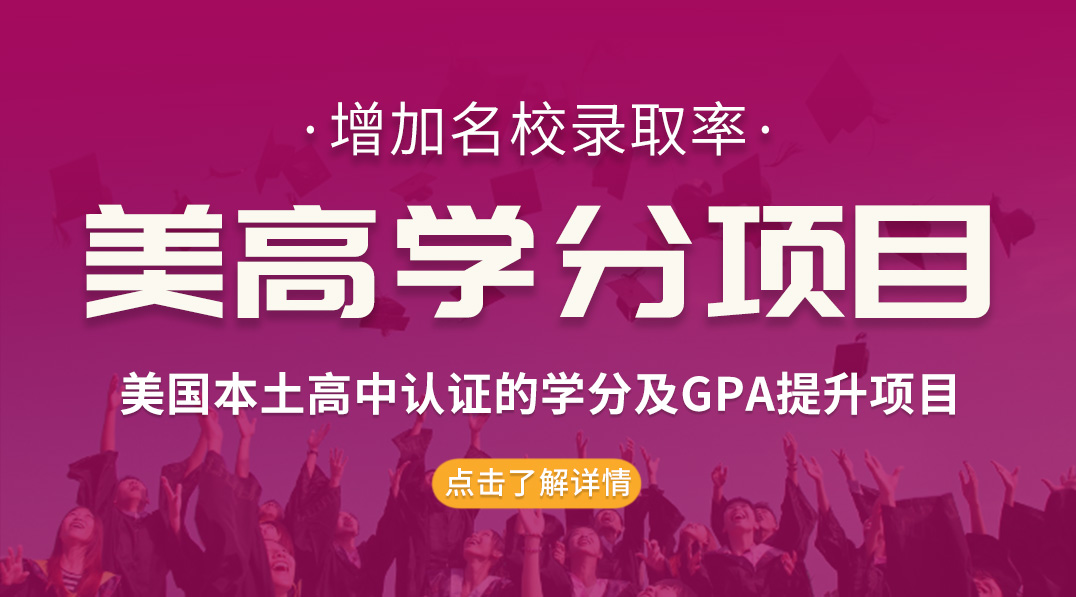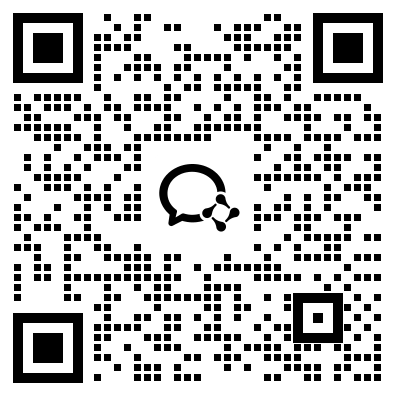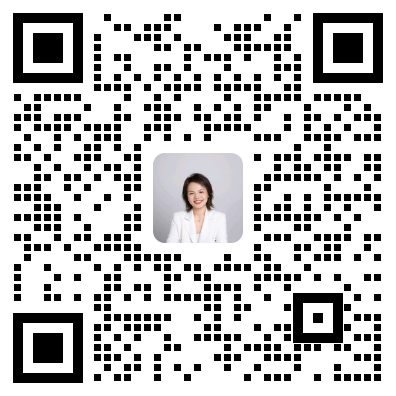- 翰林提供学术活动、国际课程、科研项目一站式留学背景提升服务!
- 400 888 0080
Create a 21st Century Classroom
Create a 21st Century Classroom
The pace of change in our world is accelerating and designing classroom instruction with a 20th-century mindset no longer prepares students for future success. While not everyone agrees on a single solution, sitting in rows and listening to content delivered through a lecture is slowly being replaced with active learning environments where students are prompted to ask questions, seek out relevant information, and apply information, not just remember it.
我们这个世界的变化速度正在加快,用第二十世纪的思维设计课堂教学已经不再为学生未来的成功做好准备。虽然不是每个人都同意单曲所以冥想,坐成一排,聆听演讲中的内容,正慢慢地被积极的学习环境所取代,在这种环境中,学生被提示提问,寻找相关的内容。信息,并应用信息,而不仅仅是记住它。
“The illiterate of the 21st century will not be those who cannot read and write, but those who cannot learn, unlearn, and relearn.” --Alvin Toffler
“第二十一世纪的文盲将不是那些不会读写的人,而是那些不会学习、不会学习、不会再学习的人。”。-阿尔文·托夫勒
In 2002, the Partnership for 21st Century Skills (P21) began looking at the skills students need to be successful citizens beyond school. After interviewing leaders in a range of fields and working with schools to implement the P21 framework, they identified a set of four essential skills they call the 4 C’s: critical thinking, creativity, collaboration and communication.
2002,第二十一世纪技能合作组织(P21)开始研究学生在学校之外需要成为成功公民的技能。在访问了各个领域的领导和工作之后为了实施P21框架,他们确定了一套他们称之为4C的四项基本技能:批判性思维、创造力、协作和沟通。
The rest of this article describes steps you can take to reinforce the 4 C’s in your classroom and provides ideas you can use to change instruction to make the 4 C’s an integral part of the learning process.
本文的其余部分描述了您可以采取的步骤,以加强4C在您的课堂上,并提供了一些想法,您可以使用改变教学,使4C的一个组成部分的学习process过程Critical Thinking
批判性思维
The often-cited, but nevertheless accurate, reality is that today’s wealth of information makes it essential that every student must be able to compare and evaluate facts and opinions and make decisions based on that analysis. We need citizens who know more than “about” something, we need citizens who can take information and apply it to solve problems and create solution
经常被引用的,但准确的,现实是,今天的财富信息就要求每个学生必须能够比较和评价事实和意见作出决定基于这一分析。我们需要的是比“了解”更多的公民,我们需要能够获取信息并应用于解决问题和创造解决方案的公民。
Developing student’s thinking skills is not a revolutionary concept. Benjamin Bloom and colleagues first published his eponymous Bloom’s Taxonomy, the ubiquitous methodology for classifying educational learning objectives, in 1956! You’re likely also familiar with Webb’s Depth of Knowledge, which was released back almost 30 years ago and the revised Bloom’s Taxonomy from 2001. No matter which system you use, educational models like these can help you plan instruction that promotes higher levels of thinking.
培养学生的思维能力不是一个革命性的概念。Benjamin Bloom和他的同事们首次发表了他的同名Bloom的分类,分类教育无处不在的方法学习目标,您可能还熟悉Webb的知识深度,它是30年前发布的,以及2001年修订的Bloom分类法。不管哪个系统像这样的教育模式可以帮助你规划提高思维水平的指令。
Today’s presentation tools make it easy for students to generate flashy presentations. Student’s can simply mine data during a brief web search and copy and paste it into a presentation with lots of animation and movement. We can be so enamored by design and production value that we overlook the fact that the content was simply a dump of facts and information and shows no evidence of thought and understanding.
今天的演示工具使学生很容易产生华丽的演示文稿。学生可以在简短的网络搜索过程中挖掘数据,并将其复制并粘贴到一个包含大量信息的演示文稿中。动画和运动。我们可以如此迷恋和生产价值的设计,我们忽略了一个事实,内容是一个简单的把事实和信息,没有证据显示思想、理解、懂得的程度。
It is easy — and essential — to move beyond “about” projects; simply ask students to demonstrate knowledge AND thinking with end products that require both. Educator Elizabeth Allen has a list of fun products students can create that push them beyond copying and pasting, requiring them to think, internalize, and contextualize.
超越“关注”项目是简单而必要的;简单地要求学生展示知识和思考,同时需要两者的最终产品。教育家Elizabeth Allen有一个有趣的清单学生可以创建,推动他们的产品无法复制和粘贴,要求他们思考、内化、和背景。
We need to create classroom cultures that value questions more than answers. If we want students to analyze, evaluate, and work with challenging ideas and problems, we need to equip them with skills for categorizing, deconstructing big ideas into component parts, identifying relationships, and asking more questions. Great thinking starts with effective inquiry.
我们需要创造出重视问题而不是答案的课堂文化。如果我们想让学生分析、评估和处理具有挑战性的想法和问题,我们需要让他们具备相关技能。或者分类,将大的想法分解成组件,识别关系,问更多的问题。伟大的思想始于有效的探究。
Creativity
创造性,创造力,创作能力
The US Patent office evaluates new ideas using the criteria of 1) originality, 2) usefulness, and 3) novelty. This sort of innovation is a result of creativity in practice. If we are going to be able to address the needs and issues in our highly complex and rapidly changing world, we need to stop thinking about creativity as just art, or as a unique character trait.
美国专利局使用的标准是:1)原创性;2)有用性;3)新颖性。这种创新是实践中创造性的结果。如果我们能为了满足我们高度复杂和迅速变化的世界的需要和问题,我们需要停止思考创造性,如艺术,或者作为一个独特的性格特征。
To promote creativity in our students, we need to create a learning culture that values and promotes creative behaviors. One of the biggest predictors of person’s creative capacity is their openness to experience. Ensuring that the classroom culture values risk-taking and difference can help students overcome their reluctance to try new things, especially those things at which they might not initially excel. Make it clear that creativity is a positive, valued attribute of EVERY student. “Expect that your students can do it.”
为了促进学生的创造力,我们需要创造一种重视和促进创造性行为的学习文化。个人创造力的最大预测因素之一是他们的开放性。没有经验。确保课堂文化重视冒险和差异,可以帮助学生克服不愿尝试新事物,特别是那些他们可能不喜欢的东西。盟友Excel。要明白,创造力是每个学生积极的、有价值的属性。“期望你的学生能做到这一点。”
To promote student creativity, require students to create work that is uniquely theirs. This sounds easy, but making it happen requires you to change as well. Let go of giving students exact instructions that, when followed, are guaranteed to meet your expectation of success. Let students take control of project design; let them define what, where, when, and how during ongoing discussions about why.
为了促进学生的创造性,要求学生创造独特的作品。这听起来很容易,但这也需要你改变。让学生准确地指导学生ONS,当被遵循时,保证满足您对成功的期望。让学生控制项目设计,让他们在当前关于wh的讨论中定义内容、地点、时间和方式。
Student work, whether done individually or in teams, should not look like work done by other students on the same topic. Sameness is a symptom…when the processes and the resulting product(s) all look the same, there is too little control in students’ hands and too many instructions being followed. Create an environment where student creativity can flourish by transferring responsibility for learning and demonstrations of that learning to students.
学生的工作,无论是单独完成还是团队完成,都不应该像其他学生在同一主题上所做的工作一样。同一性是一种症状……当过程和结果产品看起来都很相似的时候。同样的,学生们手中的控制太少,指令也太多了。创造一个环境,让学生的创造力可以通过转移学习责任来蓬勃发展。对学生的学习和示范。
Collaboraton
Students often dislike working in groups because they do not know how to collaborate productively. Take the time to develop norms for group work and discuss behaviors and actions that result in successful team projects.
学生通常不喜欢分组工作,因为他们不知道如何有效地合作。花时间制定团队工作的规范,讨论能取得成功的行为和行为。
Learning to build on one another's knowledge and expertise involves respect, listening, and contributing. You might scaffold the learning process by assigning roles, allowing students to see the different tasks needed to complete a project and understand how their strengths can contribute to the overall success of their group. Make sure students have time and opportunities to reflect on their own strengths and weakness, as well as how to utilize the strengths of their team members for maximum effect.
学习建立彼此的知识和专长包括尊重、倾听和贡献。你可能支架学习过程中的角色分配,让学生看到不同租用完成一个项目所需的任务,并了解他们的优势如何能够为团队的整体成功做出贡献。确保学生有时间和机会独立思考优势和弱点,以及如何利用他们的团队成员的优势,以获得最大的效果。
While building skills for successful teamwork is important, it is just the beginning of collaboration in a 21st century classroom. If we want to prepare students for high-level thinking and work, we need to give them access to real work with experts and colleagues in a field of study. They need to work alongside professionals on tasks for a real audience who values that work.
虽然建立团队合作的技巧很重要,但它只是二十一世纪课堂合作的开始。如果我们想为学生准备高层次的思考和工作,我们EED让他们能够与专家和同事在一个研究领域进行真正的工作。他们需要和专业人士一起工作,为真正重视这项工作的听众做任务。
Communication
[电影]沟通课程
Including communication as one of the 4 C’s underscores the changing nature of literacy. Powerful literacy skills have always included the ability to read and to share thoughts, questions, ideas, and solutions in ways others can understand. Literacy includes traditional speaking and writing as well as well as new modes of communication made possible by widespread, affordable availability of video and multimedia tools.
把沟通作为4C的一个,突出了识字的本质。强大的读写能力一直包括阅读和分享思想、问题、想法和其他人能理解的解决方案。识字包括传统的说和写,以及新的交流方式,这是由于视频的普及和负担得起而成为可能。和多媒体工具。Regardless of the medium, students must still be capable of clear, concise writing and the correct use of topic-specific vocabulary. Today’s students must also build skills with multimedia forms of communication, requiring the ability to “show rather than tell” using pictures, music, intonation, and more.
无论是哪种媒介,学生仍必须有清晰、简洁的写作能力和正确使用特定主题的词汇。今天的学生还必须通过多媒体形式的合作来培养技能。交流,需要使用图片、音乐、语调等来“显示而不是说”的能力。
Technology has changed how we communicate. PEW Research Center findings suggest that students prefer writing on the computer to writing on paper and that they will write and edit more when writing on a device rather than writing by hand.
技术已经改变了我们的沟通方式。皮尤研究中心的发现显示,学生喜欢在电脑上书写,在纸上书写,在写时他们会写和编辑更多用手而不是书写的装置。
If we want students to work hard, we need to give them audiences for their work that value the content and delivery for more than academic purposes. Technology makes it easy to connect students to the world around them, providing an authentic audience for their communication. The Web makes it easy to connect to a specific audience, allowing students to share an idea or solution that make a real difference in the lives of real people.
如果我们想让学生们努力学习,我们需要给他们的观众,他们的工作重视内容和交付超过学术目的。技术使学生易于与学生沟通。他们周围的世界,为他们的交流提供一个真正的听众。网络可以很容易地连接到特定的观众,让学生分享一个想法或解决方案,使一个真正的di。对真正的人的生活的尊重。
21st Century Skills and the Classroom
二十一世纪技能与课堂
A 21st century classroom provides students with the dispositions and skills to meet both the 3 R’s and the 4 C’s. Don’t worry…this isn’t yet another requirement you’ll need another teacher to cover.. To help students gain these essential 21st century skills, you can adapt the process of learning, not the content they learn. By adding in both maker movement ideals and elements of project-based learning, you can provide learning opportunities that require students to learn and apply these skills.
一个第二十一世纪的教室为学生提供了满足3R和4C的要求和技能。别担心……这还不是你需要另一个老师来负责的另一个要求。为了帮助学生获得这些第二十一世纪的基本技能,你可以适应学习的过程,而不是他们学习的内容。通过加入基于项目的Lear的创作者运动理念和元素宁,你可以提供学习机会,要求学生学习和应用这些技能。
|
Creativity |
Critical Thinking |
Communication |
Collaboration |
|
create |
inquire |
present |
listen |
|
design |
predict |
justify |
share |
|
enhance |
analyze |
articulate |
clarify |
|
imagine |
find relationships |
discuss |
participate |
|
change |
evaluate |
convince |
motivate |
|
invent |
investigate |
summarize |
organize |
|
improve |
experiment |
propose |
empathize |
|
adapt |
categorize |
persuade |
compromise |
Get Making!
得到制作!
Students want to be producers, not consumers. If you have the budget and the space, you could create a Maker Space in your classroom where students can use paper and other recycled materials to build prototypes of their ideas as well as products that solve real problems.
学生希望成为生产者,而不是消费者。如果你有预算和空间,你可以在你的教室里创建一个制造空间,学生们可以在那里使用纸张和其他回收材料来建造。他们的想法原型以及解决实际问题的产品。
If you don’t, you can take advantage of technology tools that start with a blank page and let students develop their own curriculum products that show their knowledge and passion. Open-ended tools like Frames and Wixierequire students to think creatively as they develop, implement, and effectively communicate new ideas to others.
如果你不这样做,你可以利用技术工具,从一个空白页面开始,让学生开发自己的课程产品,展示他们的知识和激情。开放式工具lik电子框架和Wixierequire学生在开发、实施和有效地向他人传达新想法时创造性思维。
Having students create with video, audio, text, and images provides an opportunity to exercise higher-order thinking skills. Students must critically evaluate both content and media as they frame, analyze, and synthesize information to solve problems and answer questions.
让学生通过视频、音频、文本和图像来创造高阶思维技能的机会。学生必须批判性地评估内容和媒体的框架,安娜。解决问题和回答问题。
Implement Project-Based Learning
实施基于项目的学习
Project-based learning (PBL) connects students to real world issues and problems with an authentic audience. A project-based approach to teaching and learning requires students to question, think, and work together to apply learning. As they apply knowledge, explore relationships between ideas, and develop solutions, they engage deeply with and make personal connections to the curriculum.
以项目为基础的学习(PBL)将学生与真实的听众联系到现实世界的问题和问题.。一种以项目为基础的教学方法要求学生提出问题、思考和学习。共同努力,应用学习。当他们应用知识,探索想法之间的关系,开发解决方案时,他们会深入地参与课程,并与课程建立个人联系。
“Creating authentic learning tasks... prompts this important process of meaning-making, because they establish relevance; the question, ‘why is this important to me?’ does not go unanswered.” — Virginia Padilla Vigil
“创造真正的学习任务...促使这个重要的意义形成过程,因为它们建立了相关性;‘为什么这对我很重要?’这不是没有答案的问题。”。-处女帕迪拉守夜This type of project work requires students to employ flexibility and adaptability as they reevaluate their work throughout the project process, becoming self-directed learners as they produce quality results. Working in diverse teams to complete a project on time and meeting assessment requirements helps to build leadership, responsibility, social skills, collaboration skills, and cultural awareness.
这种类型的项目工作要求学生在整个项目过程中重新评估自己的工作时,要运用灵活性和适应性,在创造质量的过程中成为自我导向的学习者。结果。在不同的团队中按时完成项目并满足评估要求有助于建立领导能力、责任感、社交技能、协作能力和文化素质,本质,实质,要素。
Get started
发动发动机
Whether you start with small steps for each of the 4 C’s or tackle a large instructional shift to move toward a 21st century classroom, the important thing is to embrace the goal of provide students with the content and skills they need to succeed in our complex and changing world.
无论你是从4个C的每一个小步骤开始,还是处理一个向二十一世纪教室迈进的重大教学转变,最重要的是接受为学生提供W的目标。在我们这个复杂多变的世界里,他们需要的内容和技能是成功的。


最新发布
© 2025. All Rights Reserved. 沪ICP备2023009024号-1








